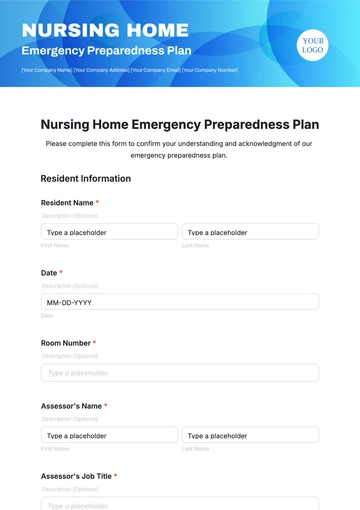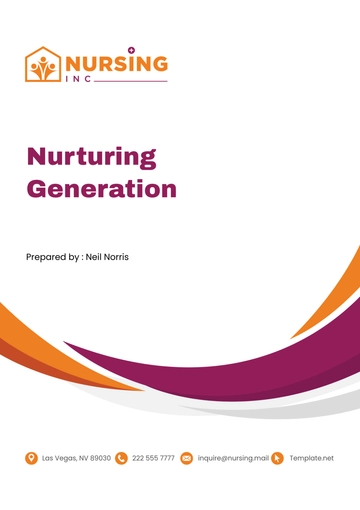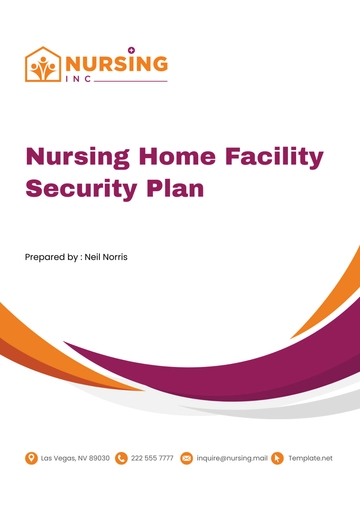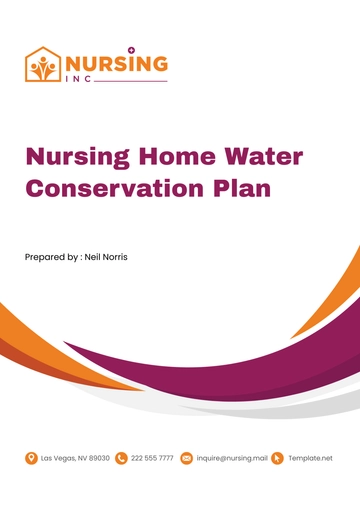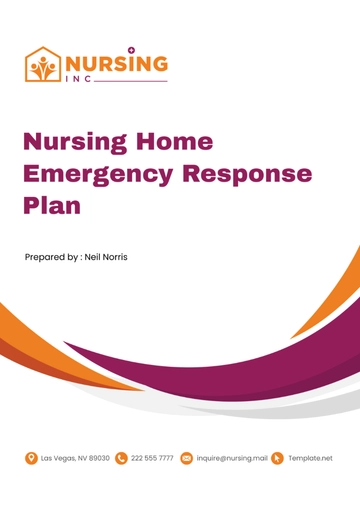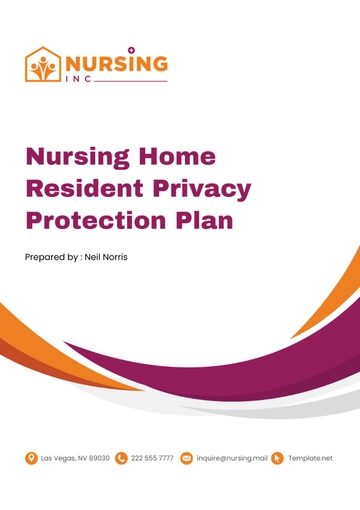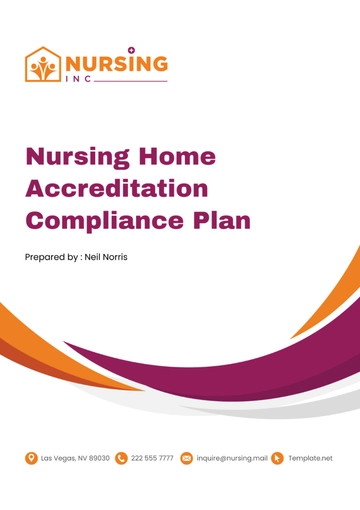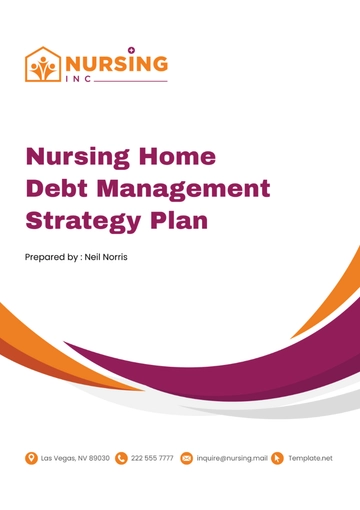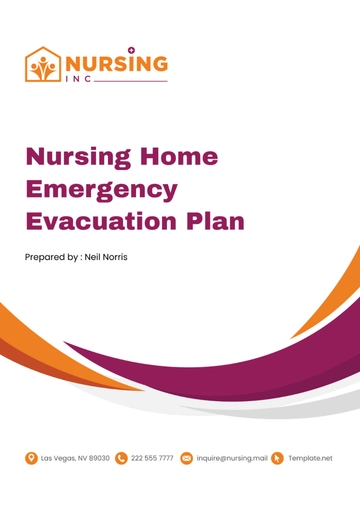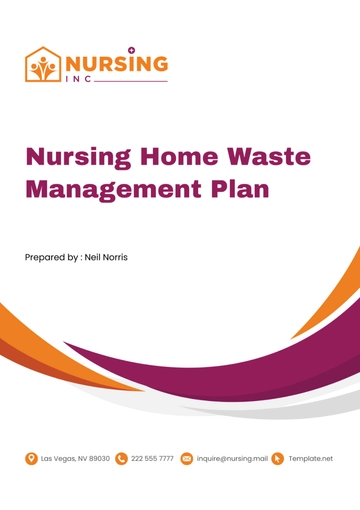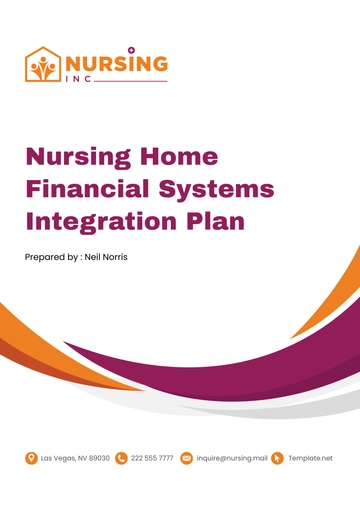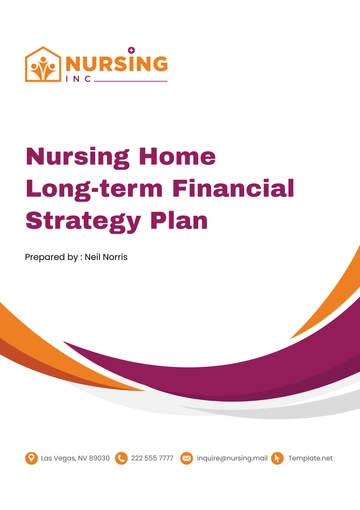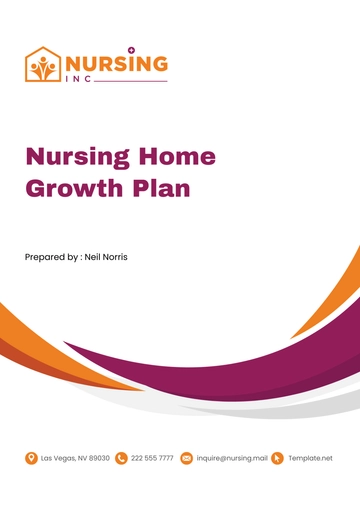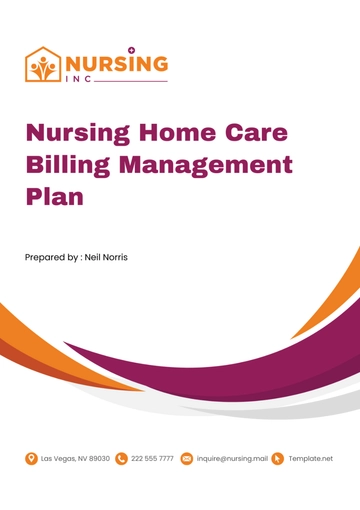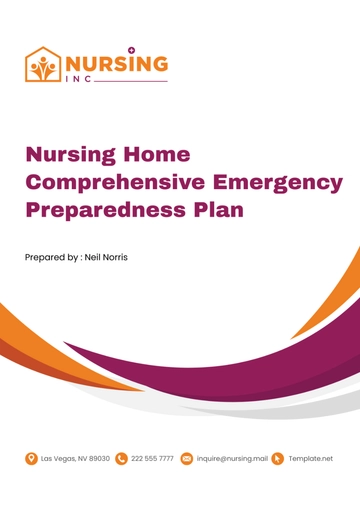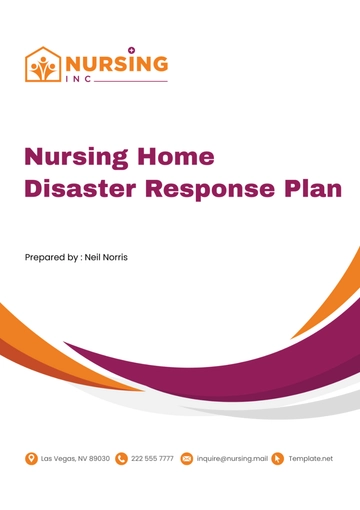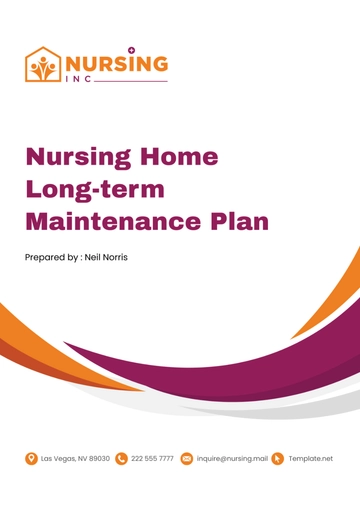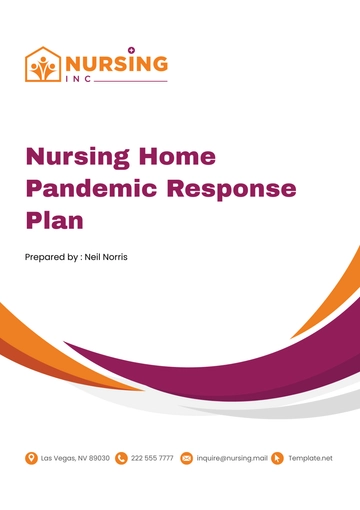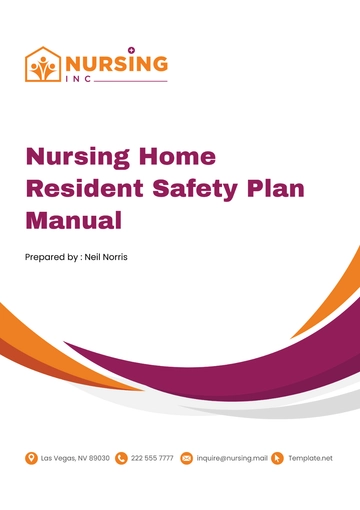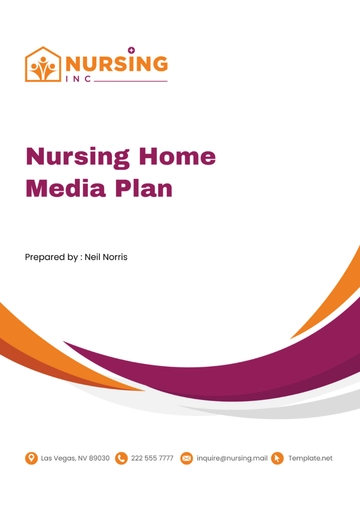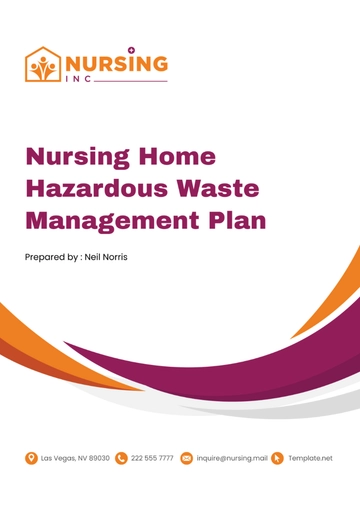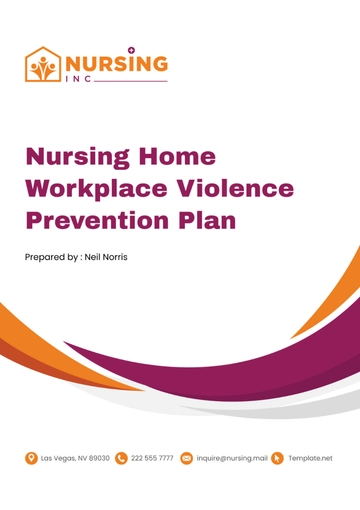Free Nursing Home Risk Management Plan
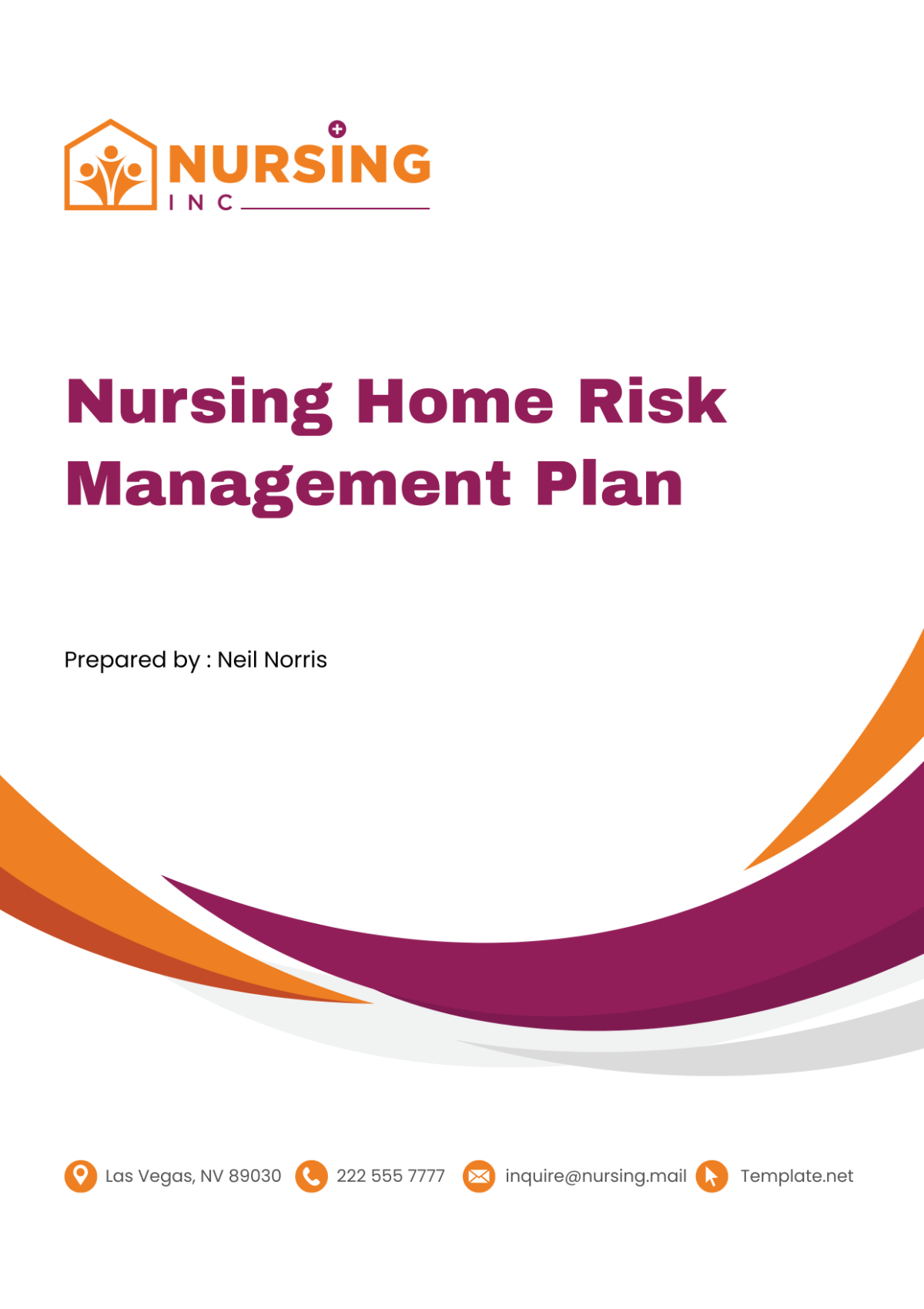
I. Introduction
A. About [Your Company Name]
[Your Company Name] is a leading long-term care facility dedicated to providing comprehensive and compassionate care to our residents. Situated in [Your Company Address], our facility offers a range of services tailored to meet the unique needs of each individual, including skilled nursing care, rehabilitation therapies, and memory care programs.
B. Purpose and Scope of the Risk Management Plan
The primary purpose of this Risk Management Plan is to identify potential risks within our facility and implement strategies to mitigate them, thereby ensuring the safety and well-being of our residents, staff, and visitors. This plan encompasses all aspects of risk management, including hazard identification, risk assessment, mitigation strategies, and ongoing monitoring and review processes.
C. Importance of Risk Management
Effective risk management is crucial for maintaining the highest standards of quality and safety in our facility. By proactively identifying and addressing potential risks, we can minimize adverse events, enhance patient safety, and protect the reputation and financial stability of our organization. Additionally, a robust risk management program demonstrates our commitment to excellence and accountability in delivering care.
II. Risk Identification
A. Physical Hazards
Physical hazards pose significant risks to the safety of our residents, staff, and visitors. Common physical hazards include slippery floors, inadequate lighting, and improperly maintained equipment. To mitigate these risks, we conduct regular environmental assessments and implement measures such as installing handrails, improving lighting in high-risk areas, and establishing protocols for equipment maintenance and repair.
B. Clinical Risks
Clinical risks encompass a wide range of potential adverse events that can impact the health and well-being of our residents. These may include medication errors, pressure ulcers, infections, and incidents of wandering or elopement. To address these risks, we have implemented comprehensive protocols and procedures, including medication reconciliation processes, regular skin assessments, infection control measures, and personalized care plans for residents at risk of wandering.
C. Operational Risks
Operational risks arise from factors such as staffing shortages, inadequate emergency preparedness, and equipment failures. These risks can compromise the delivery of care and contribute to adverse outcomes for residents. To mitigate operational risks, we prioritize staff training and education, conduct regular emergency preparedness drills, and implement preventive maintenance programs for essential equipment.
D. Legal and Compliance Risks
Legal and compliance risks encompass the potential for regulatory violations, lawsuits, and financial liabilities. Non-compliance with federal, state, and local regulations governing long-term care facilities can result in penalties and reputational damage. To address these risks, we maintain rigorous compliance monitoring processes, provide ongoing staff training on regulatory requirements, and foster a culture of accountability and transparency throughout the organization.
III. Risk Assessment
Risk assessment is a systematic process of identifying, analyzing, and prioritizing risks based on their severity and likelihood of occurrence. By conducting comprehensive risk assessments, we can prioritize resources and focus our efforts on addressing the most critical risks. The risk assessment process involves input from key stakeholders, including management, clinical staff, risk management professionals, and external consultants.
IV. Risk Mitigation Strategies
Risk mitigation strategies can be described as proactive measures that are strategically designed with the sole intention of reducing the likelihood of recognized risks becoming a reality, as well as minimizing the impact should such risks occur. This range of preventive strategies includes a wide array of interventions designed to hinder the occurrence of adverse events. Besides the aspect of prevention, these strategies also aim at cultivating and promoting a culture of safety within the organization, through fostering an environment where safety is a paramount priority.
However, the successful implementation of these risk mitigation strategies does not rely solely on the efforts of one individual or department. It requires a major collaborative effort and well-coordinated planning among all stakeholders within the organization. This includes not only those at the management level but also the staff, the residents of the organization, and their families. Therefore, the entire responsibility of mitigating risks is a collective one, where all parties involved must play a significant role.
V. Monitoring and Review
Regular monitoring and review processes are essential for evaluating the effectiveness of risk management strategies and identifying areas for improvement. Key performance indicators (KPIs) are tracked and analyzed to assess the performance of risk management initiatives. The following table provides an overview of some of the KPIs monitored and their corresponding targets:
Key Performance Indicator | Description | Target |
|---|---|---|
Incident Reporting Rate | Number of incidents reported per month | < 5 incidents per 100 residents |
Fall Rate | Number of falls per 1,000 resident days | < 2 falls per 1,000 resident days |
Medication Error Rate | Number of medication errors per month | < 1 error per 100 medication administrations |
Pressure Ulcer Rate | Prevalence of pressure ulcers among residents | < 5% prevalence rate |
Compliance Audit Findings | Number of non-compliance issues identified during audits | 100% compliance with regulations |
Emergency Preparedness Drills | Frequency of emergency preparedness drills conducted | Quarterly drills conducted |
These KPIs are monitored regularly and compared against established targets to assess performance and identify areas for improvement. Additionally, incident reports and audit findings are analyzed to identify trends and patterns, which inform targeted interventions and quality improvement initiatives.
Regular review processes involve analyzing data, identifying trends, and making data-driven decisions to improve risk management practices. The following table outlines the steps involved in the review process and the responsible parties:
Review Process Step | Description | Responsible Party |
|---|---|---|
Data Collection | Gathering data on incidents, audit findings, and KPIs | Risk Management Team |
Data Analysis | Analyzing data to identify trends and patterns | Quality Improvement Team |
Review Meeting | Conducting meetings to discuss findings and develop action plans | Multidisciplinary Team |
Action Plan Implementation | Implementing targeted interventions and improvement initiatives | Departmental Leads |
Follow-Up and Evaluation | Monitoring progress and evaluating outcomes | Quality Improvement Team |
These review processes are conducted regularly to ensure ongoing improvement in risk management practices and the delivery of high-quality care to residents.
VI. Staff Training and Education
A. Orientation Training for New Staff
Newly hired staff members undergo comprehensive orientation training, which includes an overview of risk management principles and procedures. They receive training on identifying potential hazards, reporting incidents, and understanding their role in maintaining a safe environment for residents.
B. Ongoing Staff Education Programs
Regular staff education programs are conducted to reinforce risk management concepts and update staff on new protocols and best practices. These programs cover a wide range of topics, including fall prevention, infection control, medication safety, emergency response, and resident rights.
C. In-Service Training
In-service training sessions are tailored to address specific risks or areas of concern identified through incident reporting or risk assessments. These sessions provide staff with targeted education and hands-on training to enhance their skills and knowledge in critical areas.
D. Training Evaluation and Competency Assessment
Staff training effectiveness is evaluated through competency assessments and performance evaluations. Feedback from staff and supervisors is used to identify areas for improvement and tailor future training sessions to address specific needs.
E. Documentation and Records Management
Documentation of staff training and education activities is maintained in accordance with regulatory requirements. Records include attendance logs, training materials, and competency assessments to ensure compliance and accountability.
VII. Communication and Documentation
A. Clear Communication Channels
We have established clear communication channels for staff to report risks, incidents, and safety concerns. Staff are encouraged to communicate openly and transparently with management and colleagues to ensure timely resolution of issues.
B. Documentation Procedures
Standardized documentation procedures are in place for incident reporting, risk assessment, and mitigation efforts. Detailed records are maintained to track the status of identified risks, document interventions, and monitor outcomes over time.
C. Communication with Residents and Families
We maintain open communication with residents and their families regarding risks and safety measures within the facility. Information about safety protocols, emergency procedures, and risk mitigation efforts is provided through regular meetings, newsletters, and educational materials.
D. Communication with External Stakeholders
We maintain communication with external stakeholders, including regulatory agencies, emergency responders, and healthcare providers, to coordinate response efforts and share information on safety and risk management practices.
VIII. Legal and Regulatory Compliance
A. Compliance Monitoring
Our facility conducts regular audits and assessments to monitor compliance with applicable laws, regulations, and industry standards. We proactively identify areas of non-compliance and take corrective actions to address deficiencies and prevent recurrence.
B. Legal Counsel Consultation
We collaborate with legal counsel to ensure that our risk management practices align with legal requirements and mitigate potential liabilities. Legal counsel provides guidance on regulatory compliance, risk assessment, and response strategies to minimize legal risks.
C. Incident Reporting and Investigation
Incident reporting and investigation procedures are established to ensure compliance with regulatory requirements and facilitate timely resolution of incidents. Reports are documented, analyzed, and shared with appropriate stakeholders to identify root causes and implement corrective actions.
D. Risk Management Policies and Procedures
Written policies and procedures are developed and implemented to guide risk management practices throughout the organization. These policies cover areas such as incident reporting, risk assessment, documentation, and communication to ensure consistency and accountability.
IX. Emergency Preparedness
A. Emergency Response Plan
We have developed a comprehensive emergency response plan that outlines procedures for responding to various emergencies, including fires, natural disasters, and medical emergencies. The plan includes protocols for evacuation, communication, and coordination with external agencies.
B. Staff Training and Drills
Regular training sessions and drills are conducted to ensure that staff are prepared to respond effectively to emergencies. Staff members receive training on emergency protocols, evacuation procedures, and the use of emergency equipment. Drills are conducted regularly to test the effectiveness of response procedures and identify areas for improvement.
C. Emergency Equipment and Supplies
We maintain adequate supplies of emergency equipment and supplies, including first aid kits, fire extinguishers, and emergency medications. Equipment is regularly inspected, maintained, and replaced as needed to ensure readiness in the event of an emergency.
D. Community Partnerships and Collaboration
We collaborate with local emergency responders, healthcare providers, and community organizations to enhance our emergency preparedness efforts. These partnerships facilitate coordination and communication during emergencies and ensure access to resources and support services.
X. Continuous Improvement
A. Quality Improvement Initiatives
We are committed to continuous improvement in our risk management practices through ongoing quality improvement initiatives. These initiatives involve monitoring key performance indicators, analyzing trends, and implementing targeted interventions to enhance patient safety and mitigate risks.
B. Feedback Mechanisms
We solicit feedback from staff, residents, and families to identify opportunities for improvement and address concerns. Feedback mechanisms include suggestion boxes, surveys, and regular meetings to discuss safety issues and propose solutions. Feedback is used to inform decision-making and drive process improvements.
C. Benchmarking and Best Practices
We benchmark our risk management practices against industry standards and best practices to identify areas for improvement and implement evidence-based strategies. Regular review of benchmarking data allows us to track progress over time and identify opportunities for further enhancement.
D. Performance Monitoring and Reporting
We monitor and report on key performance indicators related to risk management to track progress and identify areas for improvement. Performance data is analyzed regularly, and reports are shared with stakeholders to promote transparency and accountability.
XI. Conclusion
In conclusion, [Your Company Name] is dedicated to maintaining a culture of safety and excellence through proactive risk management practices. By investing in staff training and education, fostering clear communication and documentation processes, ensuring compliance with legal and regulatory requirements, enhancing emergency preparedness efforts, and continuously seeking opportunities for improvement, we are committed to providing the highest quality of care and ensuring the safety and well-being of our residents, staff, and visitors.
- 100% Customizable, free editor
- Access 1 Million+ Templates, photo’s & graphics
- Download or share as a template
- Click and replace photos, graphics, text, backgrounds
- Resize, crop, AI write & more
- Access advanced editor
Improve your nursing home's safety standards with Template.net's editable Nursing Home Risk Management Plan Template. This customizable document is designed to streamline risk assessment and mitigation efforts. With an intuitive AI Editor Tool, effortlessly tailor the plan to your facility's unique needs. Ensure resident safety and regulatory compliance with this comprehensive template.
You may also like
- Finance Plan
- Construction Plan
- Sales Plan
- Development Plan
- Career Plan
- Budget Plan
- HR Plan
- Education Plan
- Transition Plan
- Work Plan
- Training Plan
- Communication Plan
- Operation Plan
- Health And Safety Plan
- Strategy Plan
- Professional Development Plan
- Advertising Plan
- Risk Management Plan
- Restaurant Plan
- School Plan
- Nursing Home Patient Care Plan
- Nursing Care Plan
- Plan Event
- Startup Plan
- Social Media Plan
- Staffing Plan
- Annual Plan
- Content Plan
- Payment Plan
- Implementation Plan
- Hotel Plan
- Workout Plan
- Accounting Plan
- Campaign Plan
- Essay Plan
- 30 60 90 Day Plan
- Research Plan
- Recruitment Plan
- 90 Day Plan
- Quarterly Plan
- Emergency Plan
- 5 Year Plan
- Gym Plan
- Personal Plan
- IT and Software Plan
- Treatment Plan
- Real Estate Plan
- Law Firm Plan
- Healthcare Plan
- Improvement Plan
- Media Plan
- 5 Year Business Plan
- Learning Plan
- Marketing Campaign Plan
- Travel Agency Plan
- Cleaning Services Plan
- Interior Design Plan
- Performance Plan
- PR Plan
- Birth Plan
- Life Plan
- SEO Plan
- Disaster Recovery Plan
- Continuity Plan
- Launch Plan
- Legal Plan
- Behavior Plan
- Performance Improvement Plan
- Salon Plan
- Security Plan
- Security Management Plan
- Employee Development Plan
- Quality Plan
- Service Improvement Plan
- Growth Plan
- Incident Response Plan
- Basketball Plan
- Emergency Action Plan
- Product Launch Plan
- Spa Plan
- Employee Training Plan
- Data Analysis Plan
- Employee Action Plan
- Territory Plan
- Audit Plan
- Classroom Plan
- Activity Plan
- Parenting Plan
- Care Plan
- Project Execution Plan
- Exercise Plan
- Internship Plan
- Software Development Plan
- Continuous Improvement Plan
- Leave Plan
- 90 Day Sales Plan
- Advertising Agency Plan
- Employee Transition Plan
- Smart Action Plan
- Workplace Safety Plan
- Behavior Change Plan
- Contingency Plan
- Continuity of Operations Plan
- Health Plan
- Quality Control Plan
- Self Plan
- Sports Development Plan
- Change Management Plan
- Ecommerce Plan
- Personal Financial Plan
- Process Improvement Plan
- 30-60-90 Day Sales Plan
- Crisis Management Plan
- Engagement Plan
- Execution Plan
- Pandemic Plan
- Quality Assurance Plan
- Service Continuity Plan
- Agile Project Plan
- Fundraising Plan
- Job Transition Plan
- Asset Maintenance Plan
- Maintenance Plan
- Software Test Plan
- Staff Training and Development Plan
- 3 Year Plan
- Brand Activation Plan
- Release Plan
- Resource Plan
- Risk Mitigation Plan
- Teacher Plan
- 30 60 90 Day Plan for New Manager
- Food Safety Plan
- Food Truck Plan
- Hiring Plan
- Quality Management Plan
- Wellness Plan
- Behavior Intervention Plan
- Bonus Plan
- Investment Plan
- Maternity Leave Plan
- Pandemic Response Plan
- Succession Planning
- Coaching Plan
- Configuration Management Plan
- Remote Work Plan
- Self Care Plan
- Teaching Plan
- 100-Day Plan
- HACCP Plan
- Student Plan
- Sustainability Plan
- 30 60 90 Day Plan for Interview
- Access Plan
- Site Specific Safety Plan
